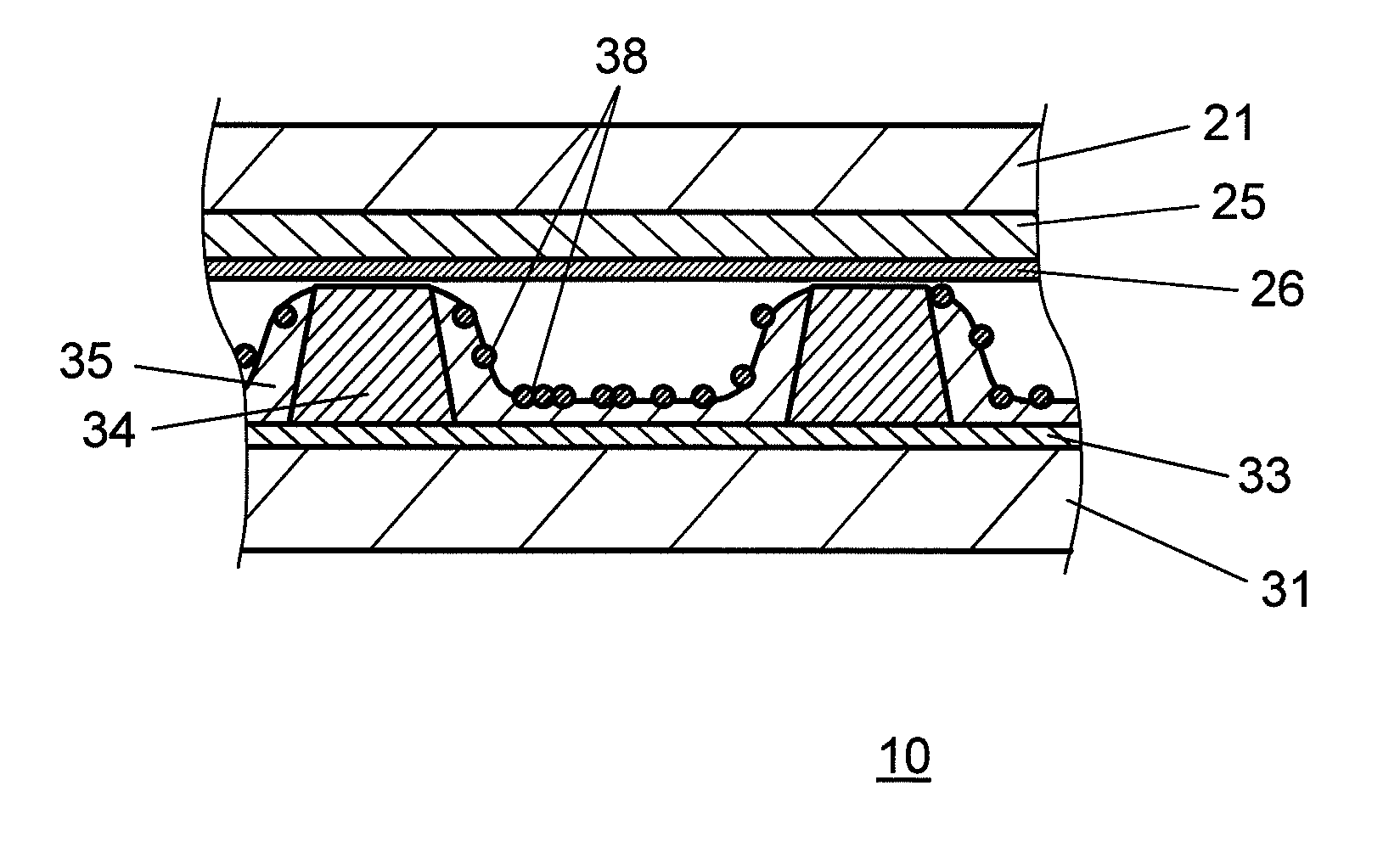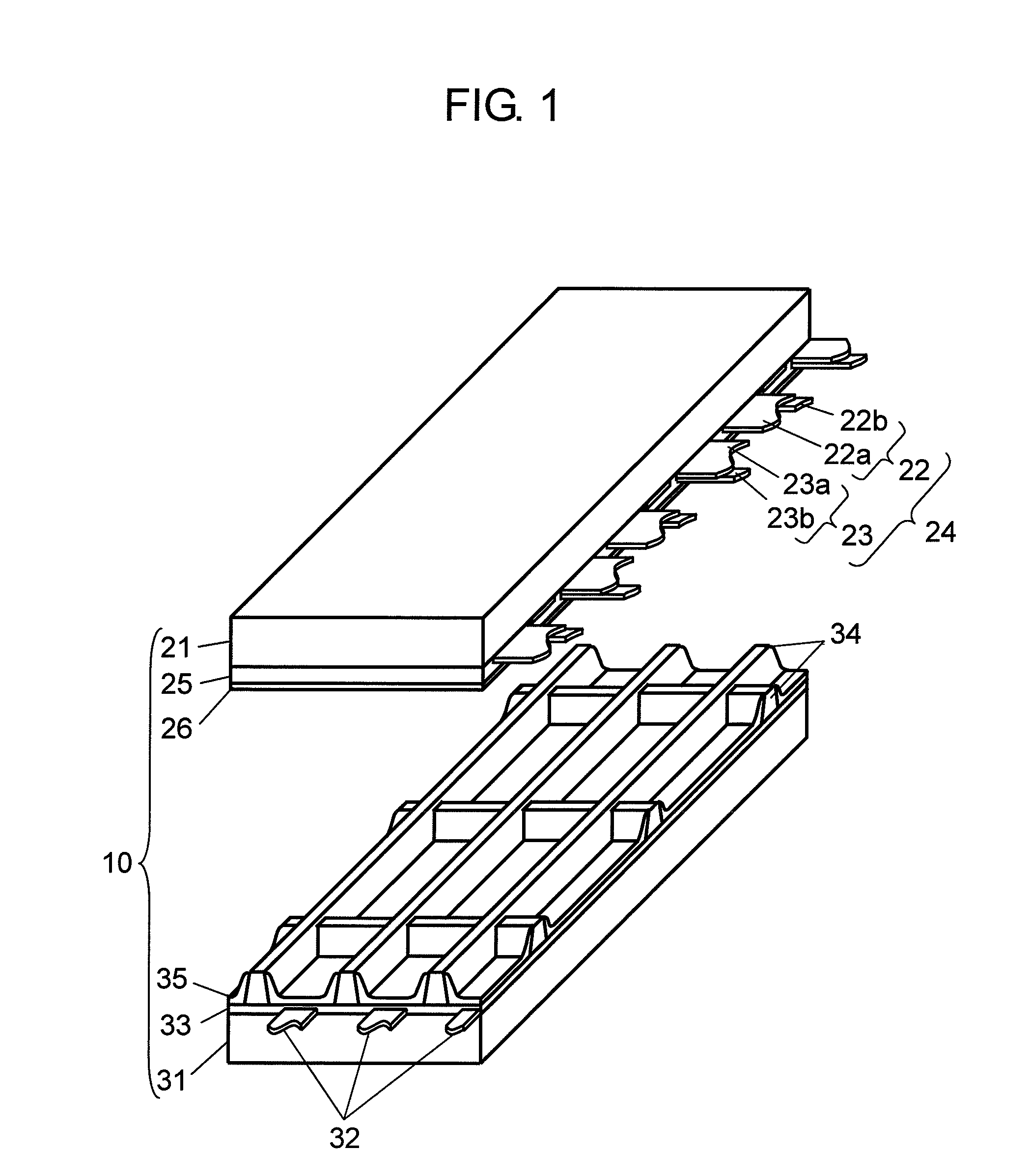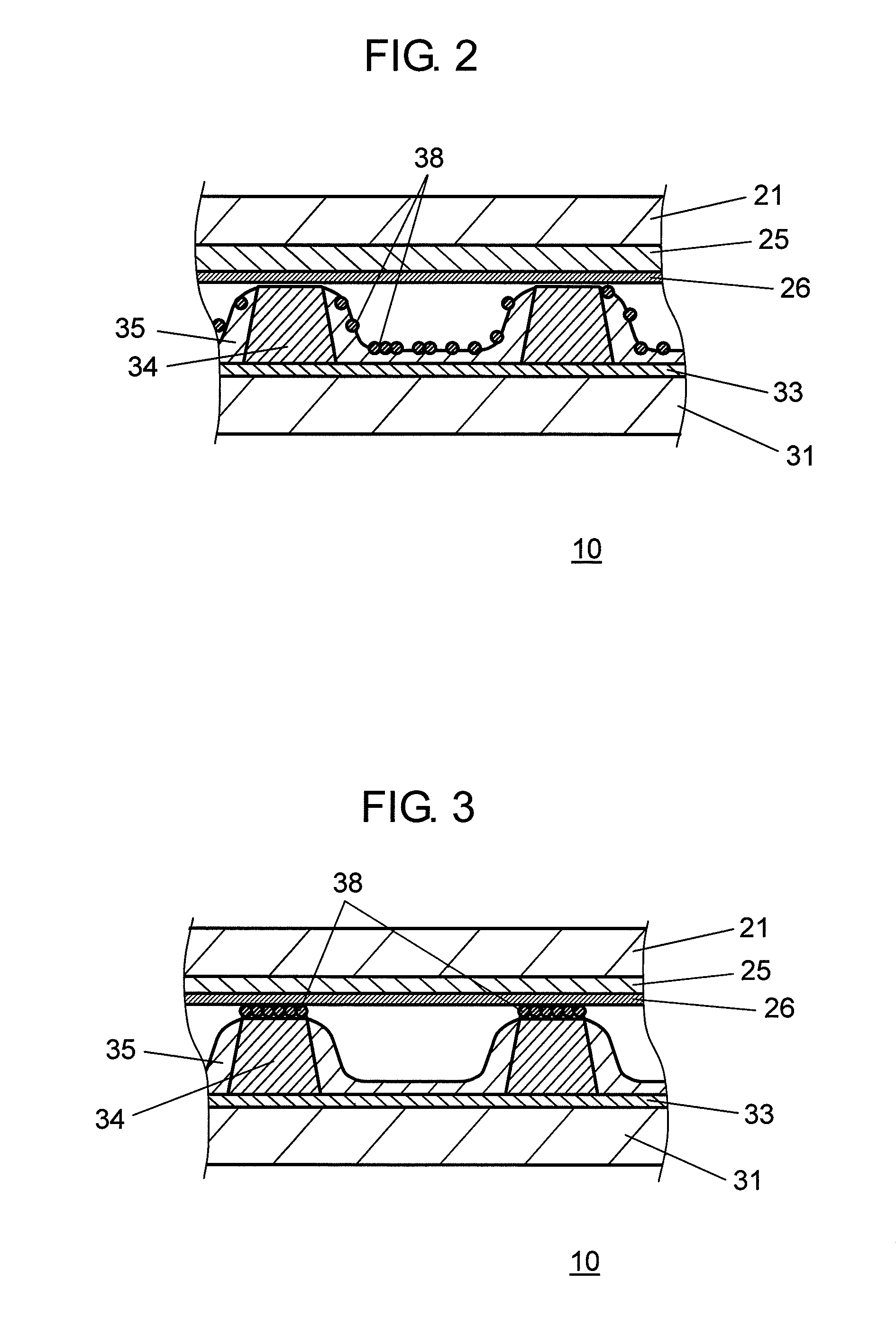Plasma display panel incorporating a hydrogen-absorbing material
a technology of hydrogen-absorbing materials and display panels, which is applied in the direction of discharge tubes luminescnet screens, gas mixture absorption, vacuum obtaining/maintenance, etc., can solve the problems of difficult to completely exhaust all gases, and reducing the breakdown voltage of discharge cells, so as to suppress the degradation of protective layers and phosphor
- Summary
- Abstract
- Description
- Claims
- Application Information
AI Technical Summary
Benefits of technology
Problems solved by technology
Method used
Image
Examples
first exemplary embodiment
[0027]FIG. 1 is an exploded perspective view showing a structure of a PDP in accordance with a first exemplary embodiment of the present invention. FIG. 2 is a sectional view of the PDP in accordance with the first exemplary embodiment of the present invention. PDP 10 is formed by sticking glass-made front substrate 21 to rear substrate 31. A plurality of display electrode pairs 24 formed of scan electrodes 22 and sustain electrodes 23 are disposed on front substrate 21. Dielectric layer 25 is formed so as to cover display electrode pairs 24, and protective layer 26 is formed on dielectric layer 25. A plurality of data electrodes 32 are formed on rear substrate 31, dielectric layer 33 is formed so as to cover data electrodes 32, and mesh barrier rib 34 is formed on dielectric layer 33. Phosphor layer 35 for emitting lights of respective colors of red, green, and blue is formed on the side surfaces of barrier rib 34 and on dielectric layer 33.
[0028]In the first exemplary embodiment, ...
second exemplary embodiment
[0041]PDP 10 of the second exemplary embodiment of the present invention differs from the first exemplary embodiment in that hydrogen-absorbing materials 38 are disposed on the surface of barrier rib 34, especially on the top of barrier rib 34, in the second exemplary embodiment. FIG. 3 is a sectional view of the PDP 10 in accordance with the second exemplary embodiment of the present invention, and schematically shows hydrogen-absorbing materials 38 that are disposed on the top of barrier rib 34.
[0042]The grain size of the platinum-group powder used as hydrogen-absorbing materials 38 in the second exemplary embodiment must be set so that a large distance does not occur between barrier rib 34 and protective layer 26, and is preferably 0.1 to 5 μm. The thickness of the platinum-group powder layer is also preferably 5 μm or smaller, and the platinum-group powder may be simply interspersed on the top of barrier rib 34.
[0043]Hydrogen-absorbing materials 38 are disposed on the top of bar...
third exemplary embodiment
[0044]PDP 10 of the third exemplary embodiment of the present invention differs from the first exemplary embodiment in that hydrogen-absorbing materials 38 are disposed on protective layer 26 of front substrate 21 in the third exemplary embodiment. FIG. 4 is a sectional view of PDP 10 in accordance with the third exemplary embodiment of the present invention, and schematically shows hydrogen-absorbing materials 38 dispersed on protective layer 26.
[0045]Similarly to the second exemplary embodiment, the grain size of the platinum-group powder used as hydrogen-absorbing materials 38 in the third exemplary embodiment must be set so that a large distance does not occur between barrier rib 34 and protective layer 26, and is preferably 0.1 to 5 μm. The coverage factor at which the platinum-group powder covers protective layer 26 is preferably set to 50% or lower so as to prevent the platinum-group powder from disturbing the transmission of visible light.
[0046]As discussed in the first thro...
PUM
 Login to View More
Login to View More Abstract
Description
Claims
Application Information
 Login to View More
Login to View More - R&D
- Intellectual Property
- Life Sciences
- Materials
- Tech Scout
- Unparalleled Data Quality
- Higher Quality Content
- 60% Fewer Hallucinations
Browse by: Latest US Patents, China's latest patents, Technical Efficacy Thesaurus, Application Domain, Technology Topic, Popular Technical Reports.
© 2025 PatSnap. All rights reserved.Legal|Privacy policy|Modern Slavery Act Transparency Statement|Sitemap|About US| Contact US: help@patsnap.com



